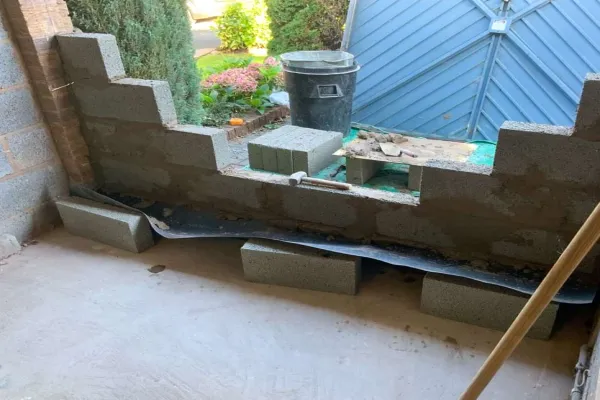Are you looking to increase the liveable space in your house?
A loft conversion can help you achieve this.
If you’re preparing for a loft conversion, you may wonder how long it takes to do one.
We’ve answered this question and more below.
Factors that impact the time loft conversions take
A regular loft conversion involves changing the function of your loft.
This usually means changing a loft into a bedroom or living space. So, you need to consider electricity, heating, and gas to use it as a bedroom or living space.
Some of the other things you need to consider with a loft conversion include:
- Head room
- Fire safety
- Acoustics
- Natural lighting.
How long does a loft conversion take?
A typical loft conversion takes around 6 weeks to complete.
This depends on several factors, such as the professional that carries out this work, and the nature of the conversion.
This six-week period refers specifically to work getting started on restructuring the room.
It doesn’t include applications for planning permission or challenges that occur midway through.
How long does each type of loft conversion take?
The type of loft conversion usually greatly impacts the time it takes to complete. The main examples can be seen below.
Velux conversion
The simplest type of loft conversion is a velux conversion. This takes roughly 5 weeks on average.
Dormer conversion
A dormer loft conversion (or dormer addition) usually takes 7 weeks to complete.
This is more challenging than a velux because it involves a minor extension to the space.
Hip-to-gable conversion
A hip-to-gable loft conversion takes approximately 9 weeks. This is because it involves straightening a sloped roof into a vertical wall.
Mansard conversion
A mansard loft conversion usually takes 11 weeks from start to finish.
This is arguably the longest and most complicated method.
This is because a new structure is built on top of the existing roof, and the extension is usually significant.
What can slow down the time it takes to do a loft conversion?
Many factors will influence your project time. Keeping an eye on these allows you to ensure things don’t take too long.
Planning permission
Planning permission is one of the main factors that’ll slow down your loft conversion.
If you don’t already have it, you often need to wait at least 3 months from submitting your application, to receiving approval.
And in many cases, you’ll be asked further questions, sometimes denied. This delays your loft conversion even further.
Availability of materials and labour
The availability of materials and labour is another common issue. Some of the leading products involved with a loft conversion include:
- Insulation
- Plasterboard
- Timber or steel beams
- Roofing tiles
- Flooring.
If your installer struggles to get any of these, it’ll slow things down.
Changes midway through
Changes midway through your project will undoubtedly cause a delay. This could be because you’ve decided on a new layout.
Or maybe you’re unhappy with the installer and have asked them to stop while you find a new professional.
Weather conditions
In some cases, weather conditions can even affect the progress of your loft conversion.
Heavy rain, strong winds, or extreme cold can sometimes stop your professionals from working. It can also disrupt supply of materials.
Ways to speed up a loft conversion
You can speed up your loft conversion with a few neat tricks. These are worth thinking about.
Get planning permission sorted early
If your loft conversion will need planning permission, you should get this sorted before you bring in a contractor.
The process can take at least 3 months, and often more if there’s delays. Wait until this is journey already finished.
Choose a simple conversion
As mentioned further above, some loft conversions take longer than others.
If it’s crucial that yours is completed quickly, no matter what, then you may opt for one of the simpler methods.
This would be a Velux loft conversion or a dormer conversion.
Work with the right contractor
You should work with an experienced contractor on your loft conversion. Check past reviews to see what customers have said about their speed.
This ensures they have the skillset needed to finish the job quickly, without significant delays.
Get it done in the summer
You’re less likely to encounter dangerous weather involving wind, rain or snow in summer. Getting your conversion done then is worth considering.
And economic turmoil is more likely to result in issues getting hold of supplies.
You could choose to wait for things to ‘calm down’ before commissioning a loft conversion.
Faster alternatives to a loft conversion
If your goal is to increase the living space in your house, there’s several others way to do that, including different kinds of extension. And some of them may be faster.
An expert can give their opinion on whether a garage conversion would be faster.
This is sometimes the case if the room is already setup with key features such as insulation, electricity and gas.
Installing a separate outbuilding may also be faster. You can sometimes buy a conservatory or ‘summer house’ ready-made online.
This means that you only need to attach it to your property, rather than construct everything from scratch.
Lots of experts look down on this method and don’t recommend it. But it may be worth considering if you’re focused on speed, not quality or cost-effectiveness.
You could also check whether a basement conversion is viable.
It may be a faster process if you’ve already set up a spare with key amenities, such as water and heating.
















